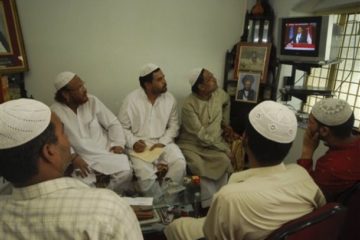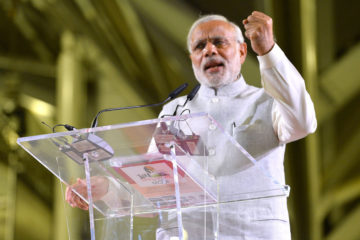The recent unrest in Iran during the first few days of this new year makes one marvel at the courage of a people who continue to march in the streets after having been deceived so many times. Four specific dates mark the history of Iranian politics since the 1979 revolution.
1979
The revolution of 1979 marks the beginning of Iran’s modern history. Dissatisfaction with the Shah (Mohammed Reza Shah Pahlavi) and the old order led the Iranian people to the streets, under a movement led by the Grand Ayatollah Khomeini: the revolution terminated 2,500 years of monarchical rule in Iran. Initially, the aim of the revolution was to transfer power from the Shahs to the people, thus establishing a republic. However, the subsequent constitution instituted an Islamic republic which combined the governance by the Supreme Leader (Khomeini) and a president elected by the people. However, the first draft of the constitution did not provide indication as to how a new Supreme Leader would be selected. Consequently, the amendment of the constitution of 1989 gave this responsibility to the Council of the Guardians (high religious figures, experts in Islamic Law) rather than to the people. In addition, no concrete restriction upon the Supreme Leader’s power was clearly stated in the constitution: he may exert authority over anything that he deems linked to religious issues (that means essentially anything).
Of the protesters in the streets between 1976 and 1979, many regretted their fight for a regime that shrunk their freedom and political representation as they quickly realised they had replaced one dictator with another. Indeed, shortly after the revolution, the situation in Iran worsened: the Iran-Iraq war, which lasted 8 years, was a terrible burden for the country (around 300,000 dead). The economic situation of the country deteriorated as well because of the revolution’s impact on Iran’s foreign trade. But most alarming of all was the daily oppression now suffered by Iranians. A simple example is Iran’s legal code, which demonstrates an outrageous rigidity and backwardness in societal rules; for instance, article 84 of the penal code states that: “An old man or old woman who has committed zina (adultery) while s/he was married, prior to being stoned to death, shall receive the hadd punishment of lashes.” It would seem that after such an experience in attempting to overthrow a regime, the Iranians would not risk it again. And yet.
1997
The year 1997 marks the election of President Khatami, a noteworthy event within Iranian politics because he advocated for social change, which mattered especially to the women and young population of the country. In her novel, Je vous écris de Téhéran (“I write to you from Tehran”), Delphine Minoui describes the overjoyed masses in the streets of the city: Khatami’s election represented hope for change, change much desired by most of the country as he obtained 70% of the votes.
2009
This bitter realisation was further reinforced by the re-election of Mahmoud Ahmadinejad in June 2009. Ahmadinejad, conservative, was elected over Mir-Hossein Mousavi, favourite candidate during the campaign. Indeed, evidence proved the election was rigged and the votes manipulated. Such an event sparked outrage throughout the country and gave birth to the Green Movement, or Persian Spring, which demanded Ahmadinejad be removed from his role as president. To the Iranian people, there was more at stake than the legality of the voting system; Ahmadinejad, president since 2005, had been involved in various violations of human rights and reinforced the use of violence within the society.

The protests under the Green Movement lasted until February of the following year and were strongly repressed by the Basij (Islamic revolutionary guard). One month after the election, official reports claimed 36 people were killed (but the Green movement maintained that 72 were killed in the protests) and 2,500 arrested in Tehran. After such a strong repression and Ahmadinejad remaining in power, the movement slowly grew quieter. To the dismay of many in Iran, he remained president until 2013, until he was finally replaced by a more moderate candidate, Hassan Rouhani, the current president, who claimed a “victory of moderation over extremism”. Although a relief compared to his predecessor, Rouhani’s election did not spark similar reactions as that of 1997, first due to his ambivalent discourse, but also because the Iranian people was now bitterly disillusioned.
2018
Since the unrest of the Green Movement in 2009, the regime has remained relatively untroubled by civil disobedience. But the situation in Iran between December 2017 and January 2018 once again led many to protest. At first, demonstrations targeted economic problems in the country. In fact, the country’s economy remained crippled, partly due to the sanctions imposed on Iran by Western countries in order to constrain its nuclear ambitions. The partial relief of economic sanctions since the 2000s have only marginally improved Iranian’s living conditions.
Last December, the government budget revealed the intent of cutting down subsidies for people most in need. This was widely unacceptable, especially for students and the younger population who suffer from increasing unemployment. Such a situation launched a wave of protest throughout Iranian cities. Soon the protest grew in scale and intent: beyond the economic situation, protesters stressed social problems, and directed their anger against the Supreme Leader. Indeed, Khamenei and the mullahs (religious authorities) were perceived as enriching themselves at the expense of the masses. Among the slogans, some acclaimed their lost former rulers, the Pahlavi dynasty; others cried “death to the dictator” and posters of Khamenei (which are everywhere in Iran) were burned down. The repression by the government was brutal, not only physically but, most shockingly, through the ban on internet, VPNs and telegram, which disconnected the protesters from the rest of the world. 1,000 people were arrested and at least 21 people died during the week of protests. Khamenei blamed Western countries, and most specifically the US, for instigating these protests. The demonstrations ended on January 7th, and it remains difficult to know precisely what is going on within the country at the moment.
However, this chain of events makes one wonder about these 39 years of muffled dissent. The people of Iran, and in particular the young population (which represents the majority) never hesitate to manifest their discontent publicly. However, over the years none of these demonstrations led to an actual revolutionary movement, which suggests that perhaps the people want structural change, rather than to overthrow the regime altogether. The recent decades have seen the rise of internet and social networks, which increasingly links Iran to the rest of the world, in spite of the regime’s best effort to constrain their reach. Religious obscurantism may only be effective to a certain degree: today, most Iranians are connected, and aware that their political, economic and social situation is neither normal nor acceptable. The ban on the internet will not remain indefinitely in place, and there is increasing evidence of the violence and violation of human rights being communicated to the world. Will the people of Iran finally succeed in obtaining change?


